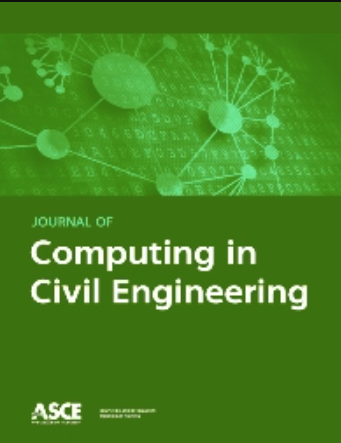后张自定心交叉层合木剪力墙在役性能监测的数字孪生
IF 4.7
2区 工程技术
Q1 COMPUTER SCIENCE, INTERDISCIPLINARY APPLICATIONS
引用次数: 5
摘要
数字孪生(DT)可以定义为多物理场、多尺度模型,其中数字模型(如建筑信息模型(BIM))基于从物理系统获得的数据以及概率模拟和模型的结果进行更新。本研究描述了实施DTs以支持大型木结构建筑结构健康监测(SHM)的关键步骤。特别是,该研究定义了一种方法方法,用于整合现有建筑物的建成几何形状,以及它们的材料特性和传感器,将SHM参数链接到数字模型中,以协助评估建筑物的结构性能。俄勒冈州立大学George W. Peavy森林科学中心(“Peavy大厅”)的一对后张交叉层压木材(CLT)自定心剪力墙作为案例研究来测试所提出的方法。剪力墙的BIM采用扫描到BIM的方法,将激光雷达点云转换为BIM。建筑物内的传感器记录影响建筑物长期性能的环境和结构参数本文章由计算机程序翻译,如有差异,请以英文原文为准。
Digital Twin for Monitoring In-Service Performance of Post-Tensioned Self-Centering Cross-Laminated Timber Shear Walls
A digital twin (DT) can be defined as a multi-physics, multiscale model in which a digital model, such as a building information model (BIM), is updated based on data obtained from a physical system as well as results from probabilistic simulations and models. This study describes the critical steps towards the implementation of DTs to support structural health monitoring (SHM) of mass timber buildings. In particular, the study defines a methodological approach used to integrate as-built geometry of existing buildings, as well as their material properties and sensors, to link SHM parameters into a digital model to assist in assessing a building’s structural performance. A coupled pair of post-tensioned cross-laminated timber (CLT) self-centering shear walls at the George W. Peavy Forest Science Center (“Peavy Hall”) at Oregon State University were used as a case study to test the proposed approach. The BIM of the shear walls was developed using a Scan-to-BIM approach by converting LiDAR point clouds into a BIM. Sensors in the building recorded environmental and structural parameters influencing the long-term performance of the
求助全文
通过发布文献求助,成功后即可免费获取论文全文。
去求助
来源期刊

Journal of Computing in Civil Engineering
工程技术-工程:土木
CiteScore
11.90
自引率
7.20%
发文量
58
审稿时长
6 months
期刊介绍:
The Journal of Computing in Civil Engineering serves as a resource to researchers, practitioners, and students on advances and innovative ideas in computing as applicable to the engineering profession. Many such ideas emerge from recent developments in computer science, information science, computer engineering, knowledge engineering, and other technical fields. Some examples are innovations in artificial intelligence, parallel processing, distributed computing, graphics and imaging, and information technology. The journal publishes research, implementation, and applications in cross-disciplinary areas including software, such as new programming languages, database-management systems, computer-aided design systems, and expert systems; hardware for robotics, bar coding, remote sensing, data mining, and knowledge acquisition; and strategic issues such as the management of computing resources, implementation strategies, and organizational impacts.
 求助内容:
求助内容: 应助结果提醒方式:
应助结果提醒方式:


